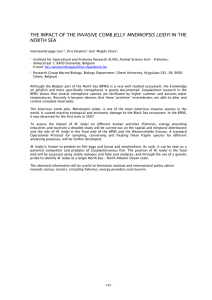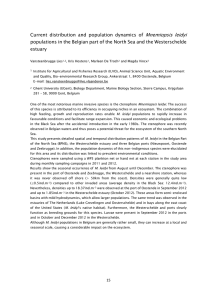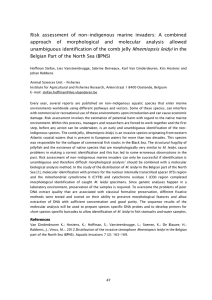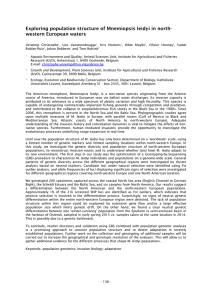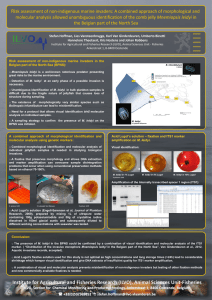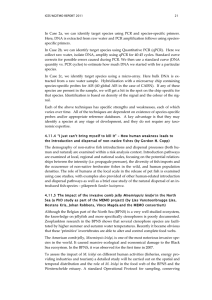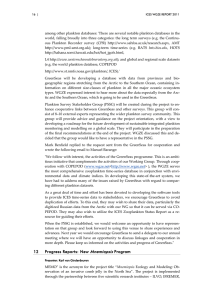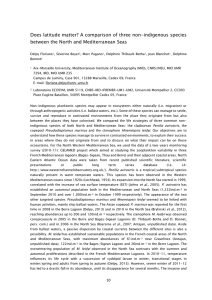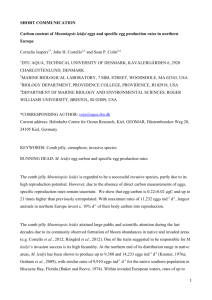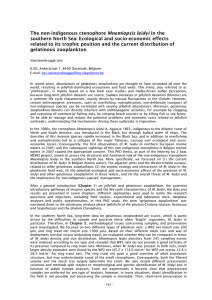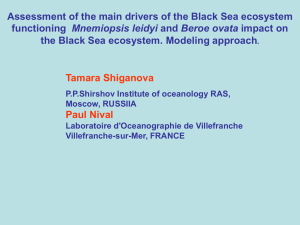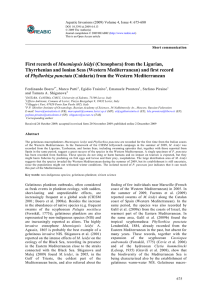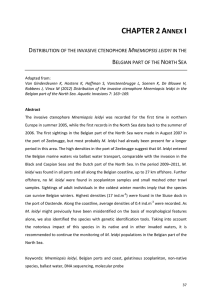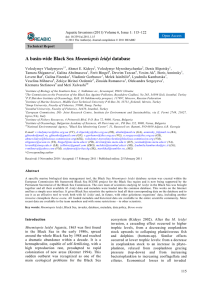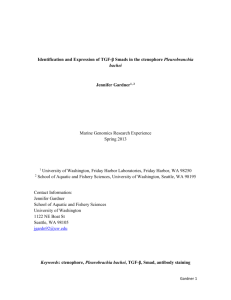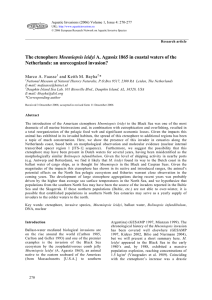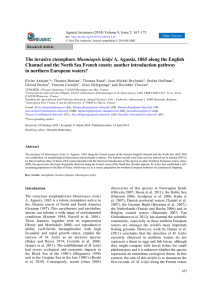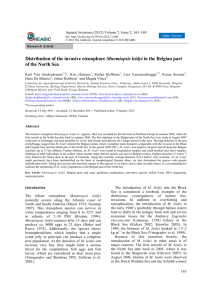MEMO_Science for the new regulation_2ndApril2014
advertisement
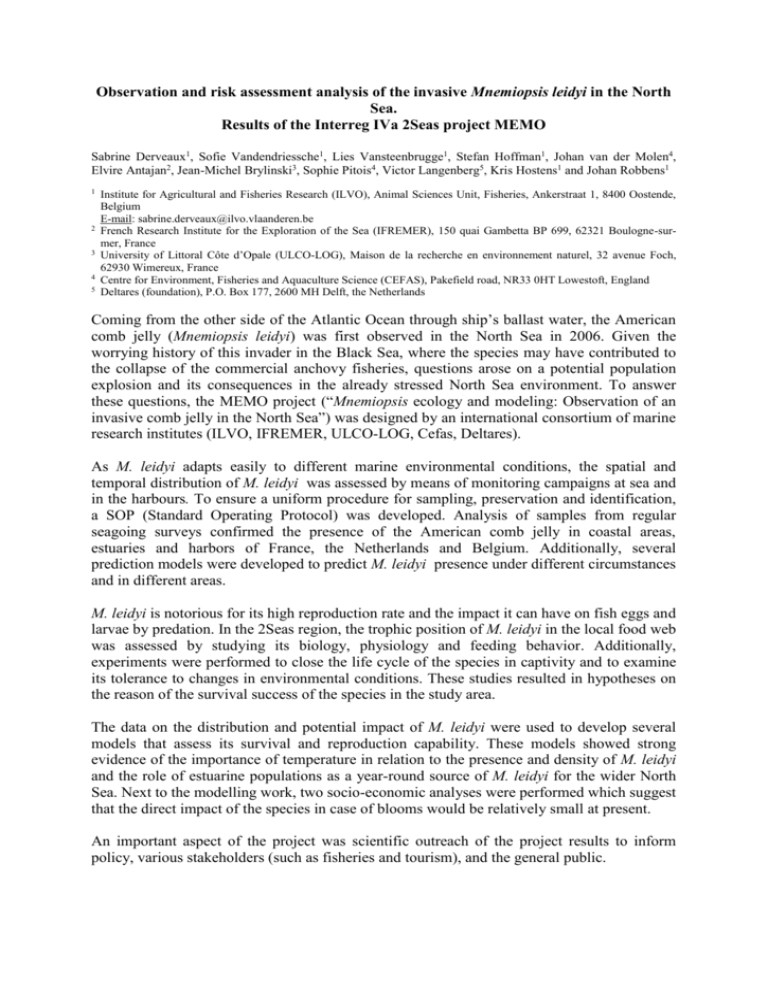
Observation and risk assessment analysis of the invasive Mnemiopsis leidyi in the North Sea. Results of the Interreg IVa 2Seas project MEMO Sabrine Derveaux1, Sofie Vandendriessche1, Lies Vansteenbrugge1, Stefan Hoffman1, Johan van der Molen4, Elvire Antajan2, Jean-Michel Brylinski3, Sophie Pitois4, Victor Langenberg5, Kris Hostens1 and Johan Robbens1 1 2 3 4 5 Institute for Agricultural and Fisheries Research (ILVO), Animal Sciences Unit, Fisheries, Ankerstraat 1, 8400 Oostende, Belgium E-mail: sabrine.derveaux@ilvo.vlaanderen.be French Research Institute for the Exploration of the Sea (IFREMER), 150 quai Gambetta BP 699, 62321 Boulogne-surmer, France University of Littoral Côte d’Opale (ULCO-LOG), Maison de la recherche en environnement naturel, 32 avenue Foch, 62930 Wimereux, France Centre for Environment, Fisheries and Aquaculture Science (CEFAS), Pakefield road, NR33 0HT Lowestoft, England Deltares (foundation), P.O. Box 177, 2600 MH Delft, the Netherlands Coming from the other side of the Atlantic Ocean through ship’s ballast water, the American comb jelly (Mnemiopsis leidyi) was first observed in the North Sea in 2006. Given the worrying history of this invader in the Black Sea, where the species may have contributed to the collapse of the commercial anchovy fisheries, questions arose on a potential population explosion and its consequences in the already stressed North Sea environment. To answer these questions, the MEMO project (“Mnemiopsis ecology and modeling: Observation of an invasive comb jelly in the North Sea”) was designed by an international consortium of marine research institutes (ILVO, IFREMER, ULCO-LOG, Cefas, Deltares). As M. leidyi adapts easily to different marine environmental conditions, the spatial and temporal distribution of M. leidyi was assessed by means of monitoring campaigns at sea and in the harbours. To ensure a uniform procedure for sampling, preservation and identification, a SOP (Standard Operating Protocol) was developed. Analysis of samples from regular seagoing surveys confirmed the presence of the American comb jelly in coastal areas, estuaries and harbors of France, the Netherlands and Belgium. Additionally, several prediction models were developed to predict M. leidyi presence under different circumstances and in different areas. M. leidyi is notorious for its high reproduction rate and the impact it can have on fish eggs and larvae by predation. In the 2Seas region, the trophic position of M. leidyi in the local food web was assessed by studying its biology, physiology and feeding behavior. Additionally, experiments were performed to close the life cycle of the species in captivity and to examine its tolerance to changes in environmental conditions. These studies resulted in hypotheses on the reason of the survival success of the species in the study area. The data on the distribution and potential impact of M. leidyi were used to develop several models that assess its survival and reproduction capability. These models showed strong evidence of the importance of temperature in relation to the presence and density of M. leidyi and the role of estuarine populations as a year-round source of M. leidyi for the wider North Sea. Next to the modelling work, two socio-economic analyses were performed which suggest that the direct impact of the species in case of blooms would be relatively small at present. An important aspect of the project was scientific outreach of the project results to inform policy, various stakeholders (such as fisheries and tourism), and the general public.
